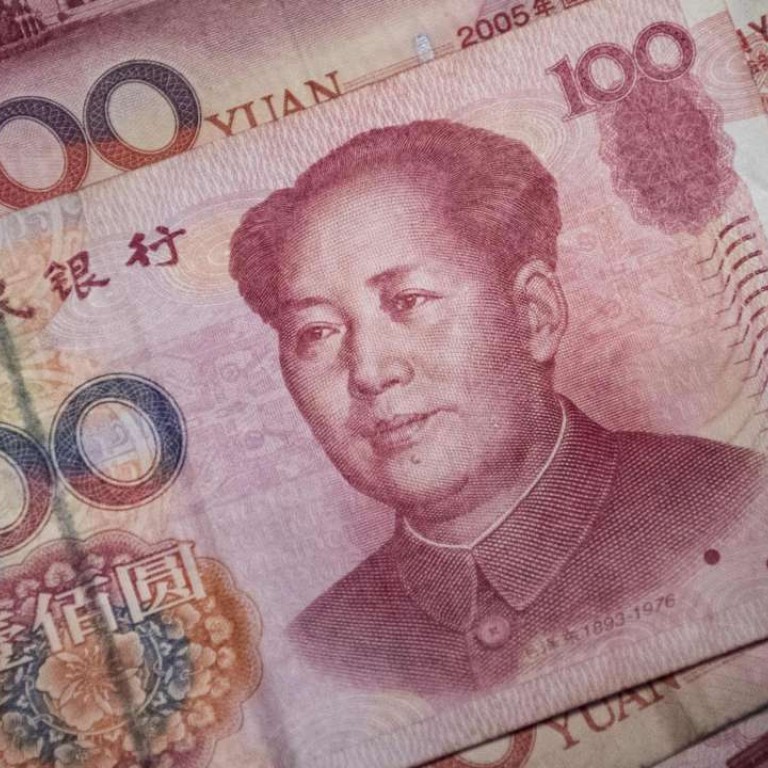
Milestone inclusion as IMF reserve currency only one step to Chinese yuan becoming truly international
Central bank says further market-oriented reforms necessary
When Mao Zedong was running the Chinese Soviet Republic in rural Jiangxi province as a rebel regime, he appointed his younger brother, Mao Zemin, in 1931 to head the regime’s “central bank”, hiding gold and silver in caves as reserves for China’s revolutionary course.
Eighty-five years later, the Chinese currency with Mao’s portrait on every note has become a component currency in an International Monetary Fund accounting unit, giving the yuan, also known as the renminbi, a nominal international reserve currency status alongside the US dollar, the euro, the British pound and the Japanese yen.
It is in this historical context that Zhou Xiaochuan, China’s central bank governor for the past 14 years, has secured a sign of national pride and another legacy that could have long-lasting implications for the country and the world, on top of his achievement of retooling China’s central banking architecture from a system tailored for a command economy into an apparatus suited for an open market economy.
When Zhou published an essay on the website of the People’s Bank of China in 2009 arguing that the Special Drawing Rights, a concept more familiar for academics than traders, could potentially serve as a basis to develop a super-sovereign currency, he had few avid supporters at home or abroad. Even when the IMF officially announced it would add the yuan to the SDR last year, Ben Bernanke, the former chairman of the Federal Reserve, called the inclusion a symbolic recognition of China’s economic heft and said the yuan had a long way to go to challenge the dollar.
On Saturday, the yuan was officially included in the SDR basket of currencies. Before that, the World Bank had already issued SDR-denominated bonds in China’s onshore bond market, the PBOC had started to release its official reserves measured in SDR, and world leaders at the G20 summit in Hangzhou last month agreed in their communique that the role of the SDR should be further expanded as part of global financial system reform.
The yuan’s entrance into the elite currency club is “a key milestone in China’s integration into the global financial system and a new starting point for China’s financial reform and opening up,” the central bank said in an article hailing the event. At the same time, the PBOC said the yuan still has “a certain distance” from other international reserve currencies in trade, financing and payments and China must take advantage of the timing to further its market-oriented reforms.
However, the path for China to promote the use of the yuan, via the SDR, will be long and winding.
Scott Kennedy, a senior fellow of the Washington-based think tank Centre for Strategic and International Studies, said China needed to develop a deep bond market and a freer exchange rate mechanism to make the yuan more attractive.
“Central banks are not active traders,” Kennedy said. “Ultimately it’s the market that will decide whether a currency can be truly international.”
Increased holdings of yuan at central banks in the post-inclusion era would be small, Kennedy said, and China Merchants Securities estimated in a report that the amount would be about $100 billion.
As the yuan faces depreciation pressure, demand from the private sector is dropping, at least for now. In the offshore yuan market in Hong Kong, for instance, deposits are shrinking as residents and individuals reduce their appetite for yuan assets.
“The yuan has been declining in usage internationally and even Chinese firms are reluctant to hold yuan,” said Christopher Balding, an associate professor at the HSBC Business School at Peking University in Shenzhen. “There is little evidence that central banks will rush into the yuan and even the amount of yuan they might hold is relatively small.”
The Chinese central bank’s intervention in the yuan exchange rate in past weeks, at the cost of squeezing yuan liquidity in offshore markets, for instance, is at odds with the long-term goal of creating a trustworthy and popular international currency.
To be sure, the challenge of a rising power’s currency to an existing one, as the historical process of the US dollar replacing the pound showed, can last for generations even if all factors are in favour of the challenger. While the PBOC’s Zhou has made the first step in what looks like being another long march, his followers will continue to face hurdles in making the yuan the next global currency.
“I believe Zhou would like to be much more reformist than he currently is,” Balding said, adding that he believed the next head would be just as constrained about pushing real reform and yuan liberalisation.


